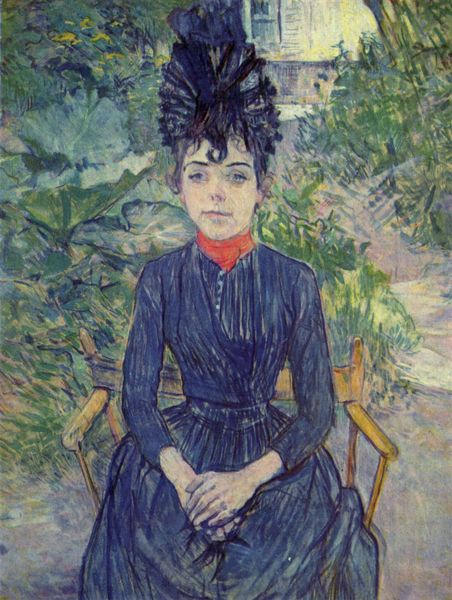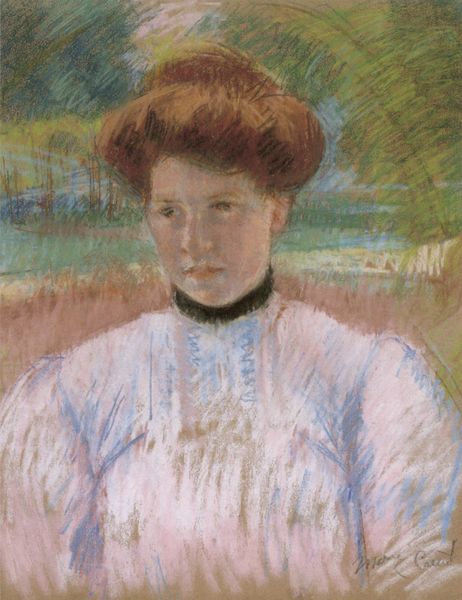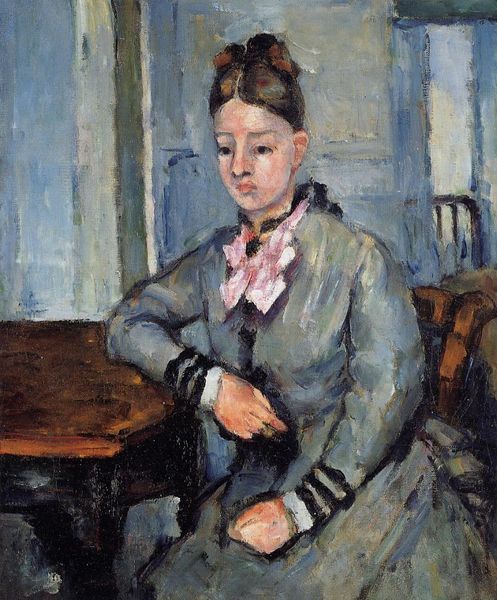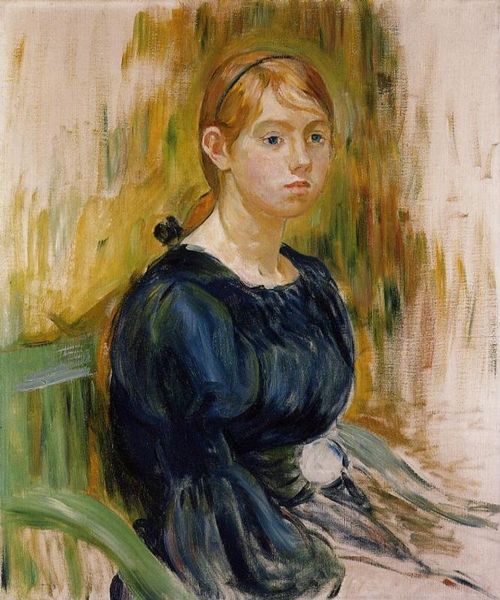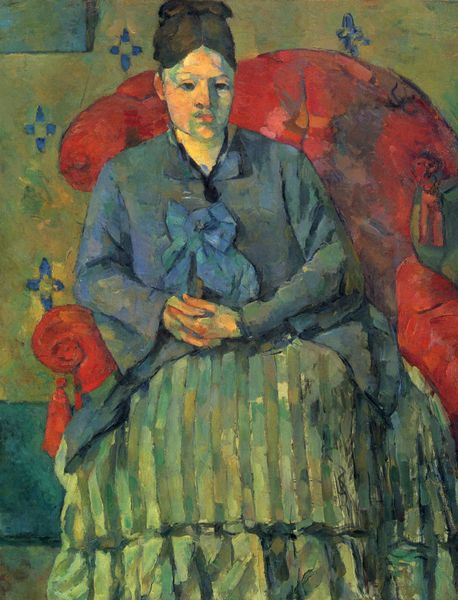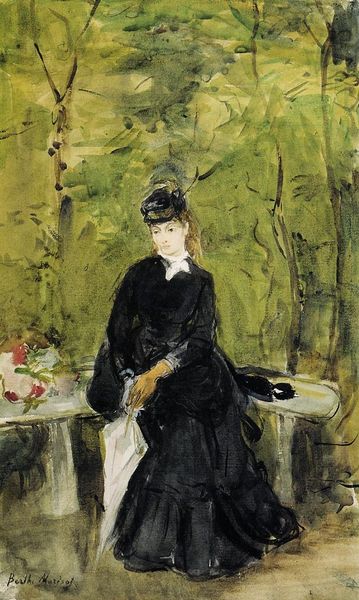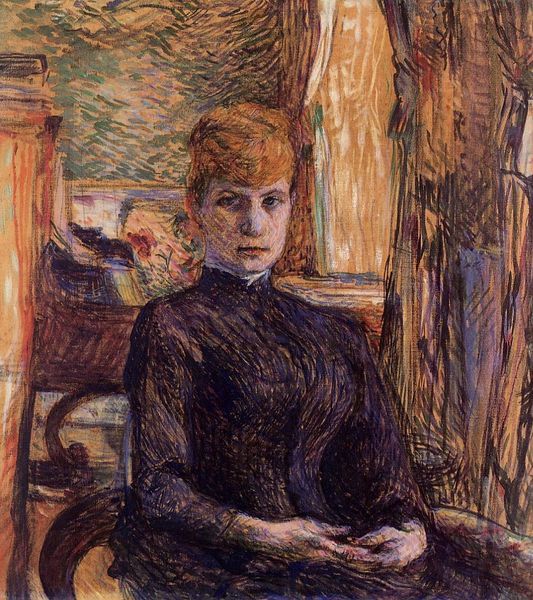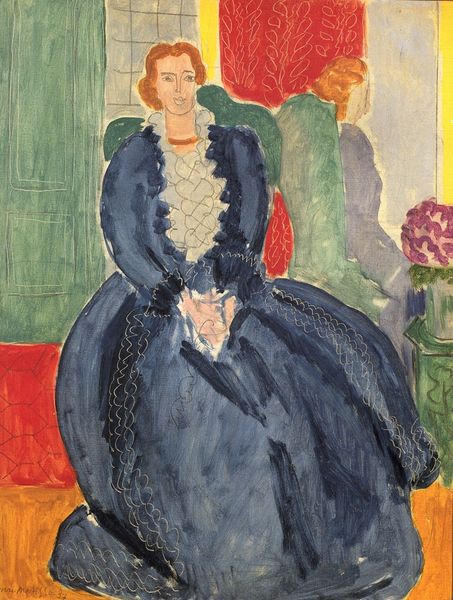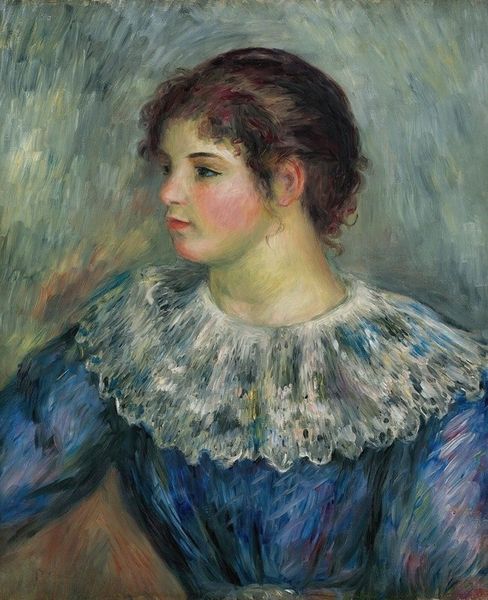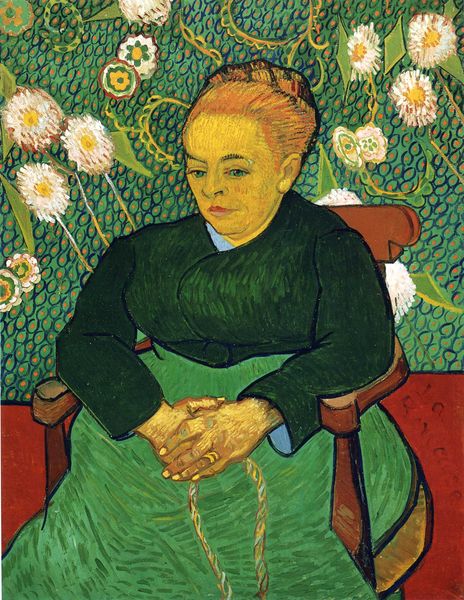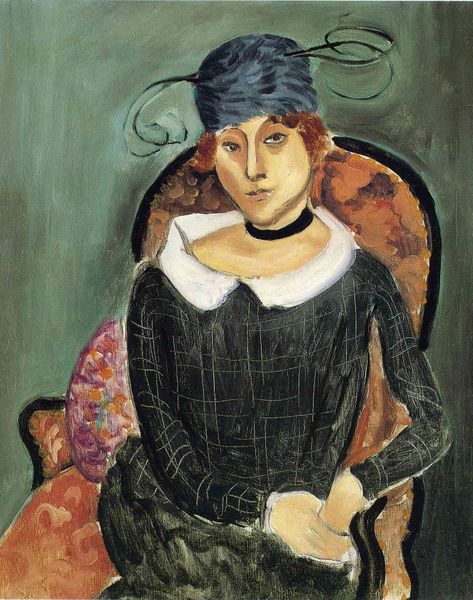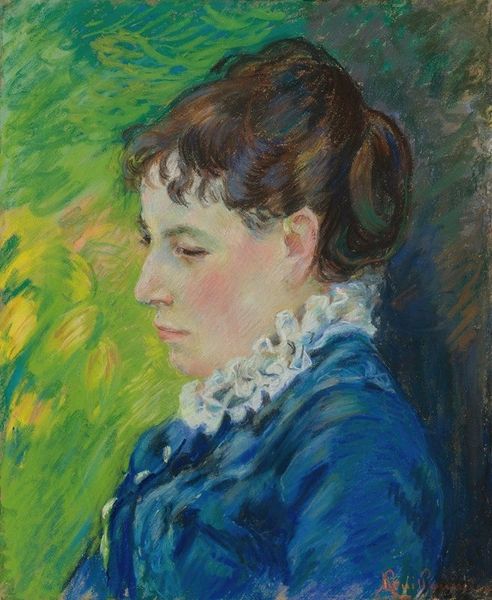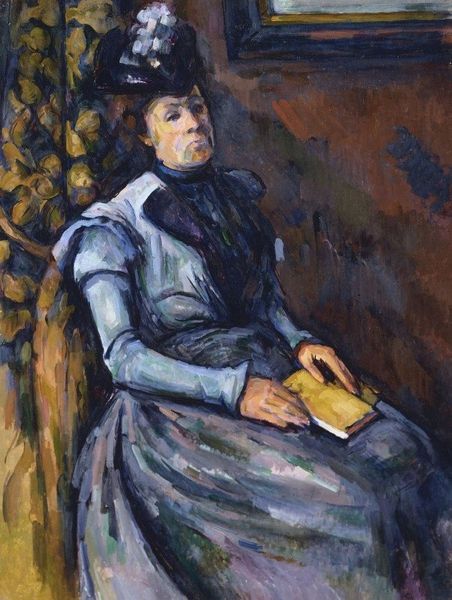
Copyright: Public Domain: Artvee
Paul Cézanne painted this portrait of his wife, Hortense Fiquet, in France at a time when traditional gender roles were deeply entrenched. Here, she's depicted seated in a conservatory, surrounded by foliage and flowers, a space traditionally associated with leisure and domesticity, reflecting the expected sphere of women at the time. Her dark, formal dress and restrained posture speak to the rigid social conventions that governed women's appearances and behaviors. Cézanne's unique brushwork disrupts conventional portraiture, challenging the academic standards of the French art establishment, but in many other ways, this is a very conventional painting. Cézanne rejected Impressionism’s fleeting moments, instead anchoring his work in a deeper exploration of form and structure. This is no social critique in the manner of Courbet or Daumier. To truly understand this painting, one might delve into the social history of 19th-century France, looking at gender roles, class structures, and the art world's institutions. Such research reveals how deeply ingrained social norms influenced not only the subject but also the artist's choices.
Comments
No comments
Be the first to comment and join the conversation on the ultimate creative platform.
